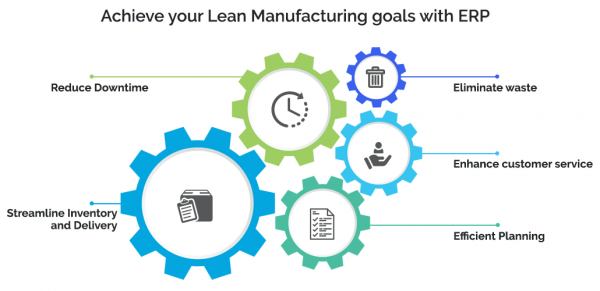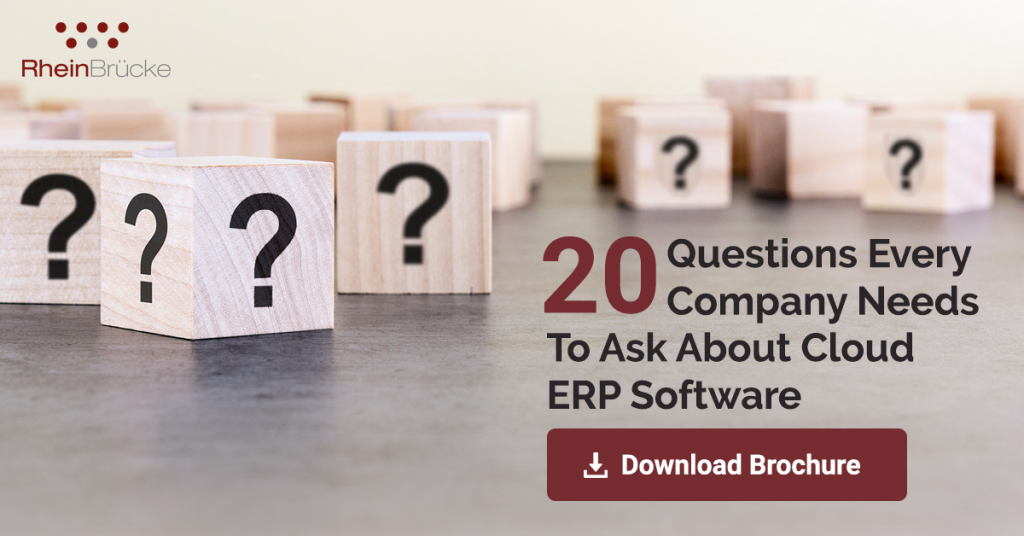
How can you leverage ERP to drive Lean Manufacturing?Everyone in the manufacturing world is familiar with Kanban, the scheduling system for lean manufacturing and just-in-time manufacturing. This system was Toyota’s disruptive force to improve manufacturing efficiency. Based entirely on demand, organisations using this system significantly reduced waste as inventory is produced only when there is demand for it. Systematic cards and signboards gave users complete visibility of the entire production process.
But nowadays, lean manufacturing has become synonymous with modern manufacturing. We’re not saying lean is irrelevant. It’s still on the top of the priority list for all manufacturers. The difference is that the focus has shifted from not just efficiency in production but rather efficiency across the entire manufacturing process.
The conflict between lean and ERP lies in materials planning and production scheduling, the classic push vs pull. ERP is a top-down approach. Materials planning relies on sales forecasts while with lean, inventory is kept to a minimum using the Kanban system that replenishes materials and parts as needed.
Where Does ERP fit-in with Lean Manufacturing Principles?
Modern day ERP systems come with many analytical features that support the lean initiatives, such as the WIP reports to control the release of work to the floor, real-time inventory reports to reduce inventory, statistics of actual set-up times versus planned to reduce the set-up times, costs etc.
Let’s look at how an ERP solution helps to avoid the following deadly wastes of manufacturing.
Over-Production
The objectives of both lean manufacturing and ERP are common. Avoid waste, reduce inventory and optimize production. An ERP’s inventory management module helps with planning inventory usage, replenishment, surplus and even turnover tracking.
An ERP Software provides data that an organisation requires to plan and schedule shop floor processes. In addition, it connects shop floor to management, giving real time updates on productivity and processes and facilitates decision making. Besides, it also assists in scheduling production as per the machine availability, reduces the downtime and the set-up time, and ensures output is not affected.
A modern day ERP system can forecast the demand based on the historical data and help plan purchasing accordingly. Such planning is inclusive of fluctuating prices and availability of raw materials.
Wastage of time
An ERP enables productivity for any manufacturing business without compromising the quality standards of lean manufacturing principles. This is primarily achieved by standardizing the processes, and ensuring uninterrupted flow of work. An ERP solution helps companies optimize and standardize business processes by encouraging the adoption of best practices. This leads to better performance and efficiency.
ERP also puts in place an effective work flow, which reduces the scope of errors and reworks and maintains consistent quality. As a result, the time saved on such reworks can be used for other productive tasks.
Complex processing:
In a survey on optimization trends in ERP usage by market research firm GatePoint Research, more than one-third of the respondents indicated that manufacturing operations are increasingly complex and almost 90% rated the need to address the challenges of complexity at three or above on a five point scale.
Modern ERP software systems are robust, flexible and configurable. They are not a one-size-fits-all proposition and can be tailored around the unique needs of a business. ERP systems also have the ability to adapt with the ever-changing needs of a growing business.
Excessive inventory:
A modern ERP solution enables an organisation to streamline all inventory activities. The software provides the necessary tools to aid the decision making process by providing real-time visibility of inventory across the operations and supply chain. A very significant advantage is that Management and Planners can get visibility of inventory across multiple sites and this is an aspect that complements the Kanban approach extremely well.
A user is also able to manage different type of items with easy tagging, classification and item analysis. An ERP solution allows a user to classify items, manage multiple units of measure, search for specific item details, and set up valuation methods, identify standard supplier, and set allocation methods, various costs and substitutes for an item. By doing so an organisation will be able to achieve, end-to-end real-time visibility, effective analysis and control and optimized inventory levels.
Quality Management
Majority of the ERP systems come with quality management modules that allow the companies to organize and asses all of their current quality management processes. It also allows the organizations to review their quality strategy. Using an ERP, the organizations can strike a fine balance between producing quality products, delivering customer satisfaction, and ensuring profitability, all at the same time.
Successful manufacturers are doing more with less people in less time, with fewer errors. According to Gartner, successful manufacturers are driving product and service innovation and building value in supply networks by being increasingly market driven. They need to be quicker and more agile, both internally and within the supply chain.
In conclusion, lean manufacturing and ERP go hand in hand. ERP gives you the key data you need to drive the actions of your lean principles. This helps you eliminate waste, drive production and keep your customers happy. The future lies in an interconnected enterprise. Principles like Kanban, JIT, and ERP can no longer work in silos and can complement each other to achieve even better outcomes.
Click here to know more about what an ERP can do for your business.





